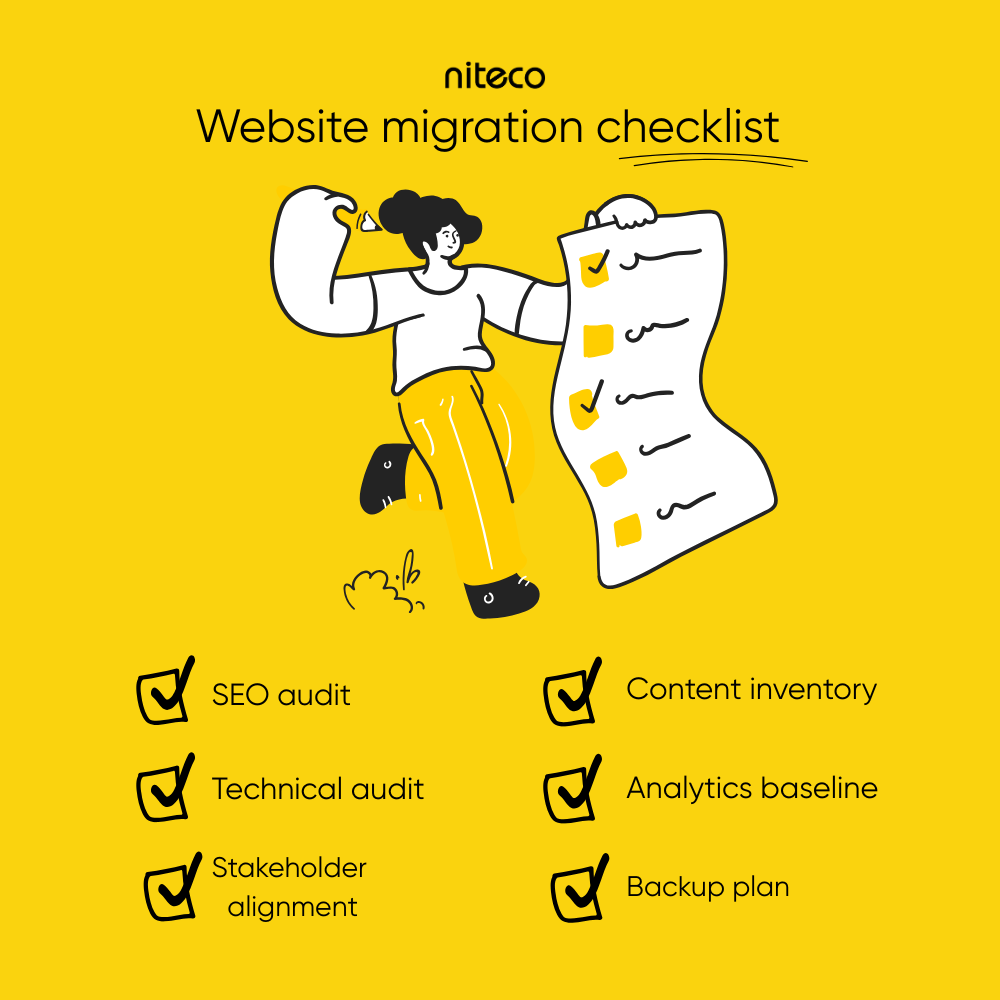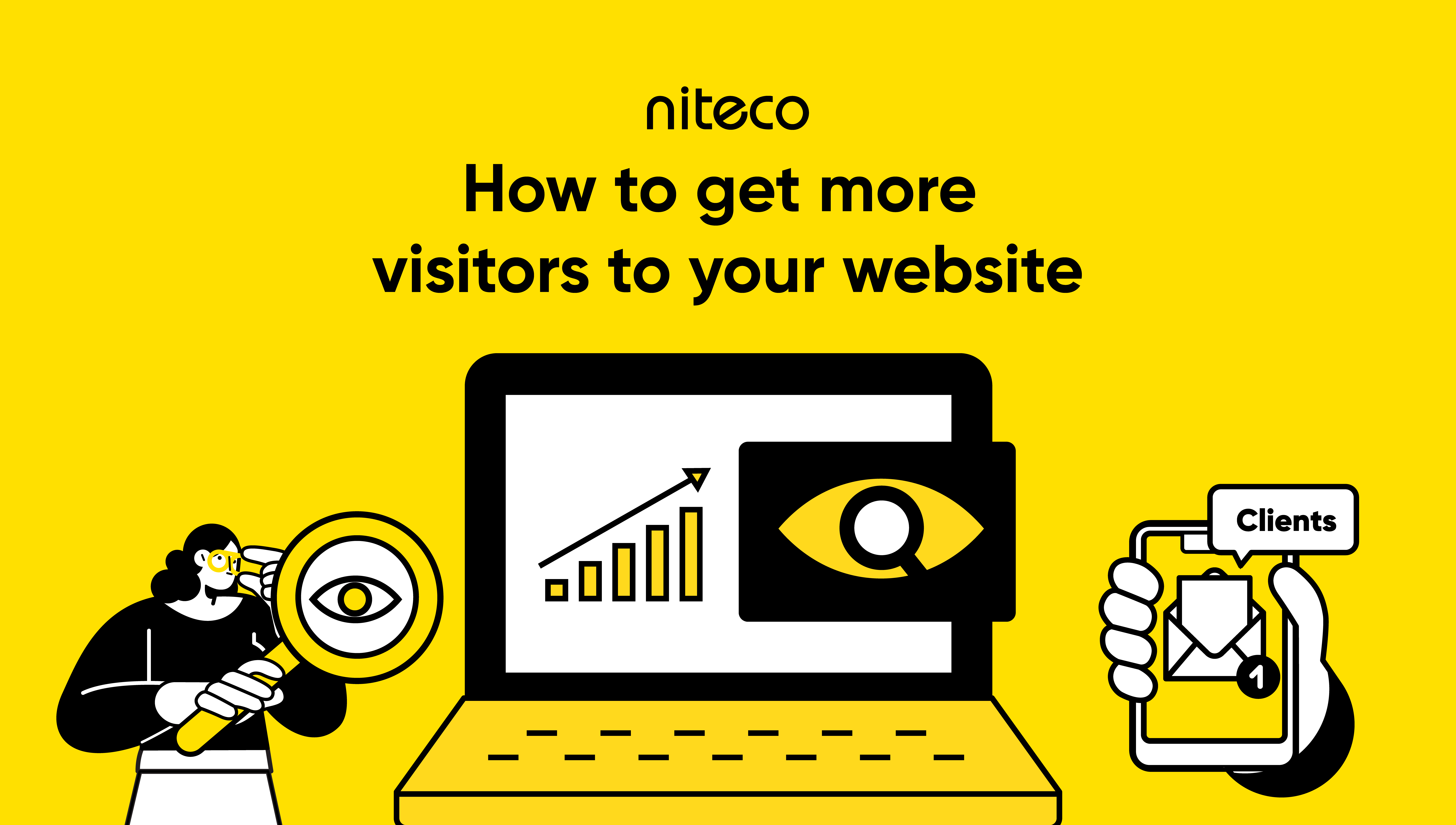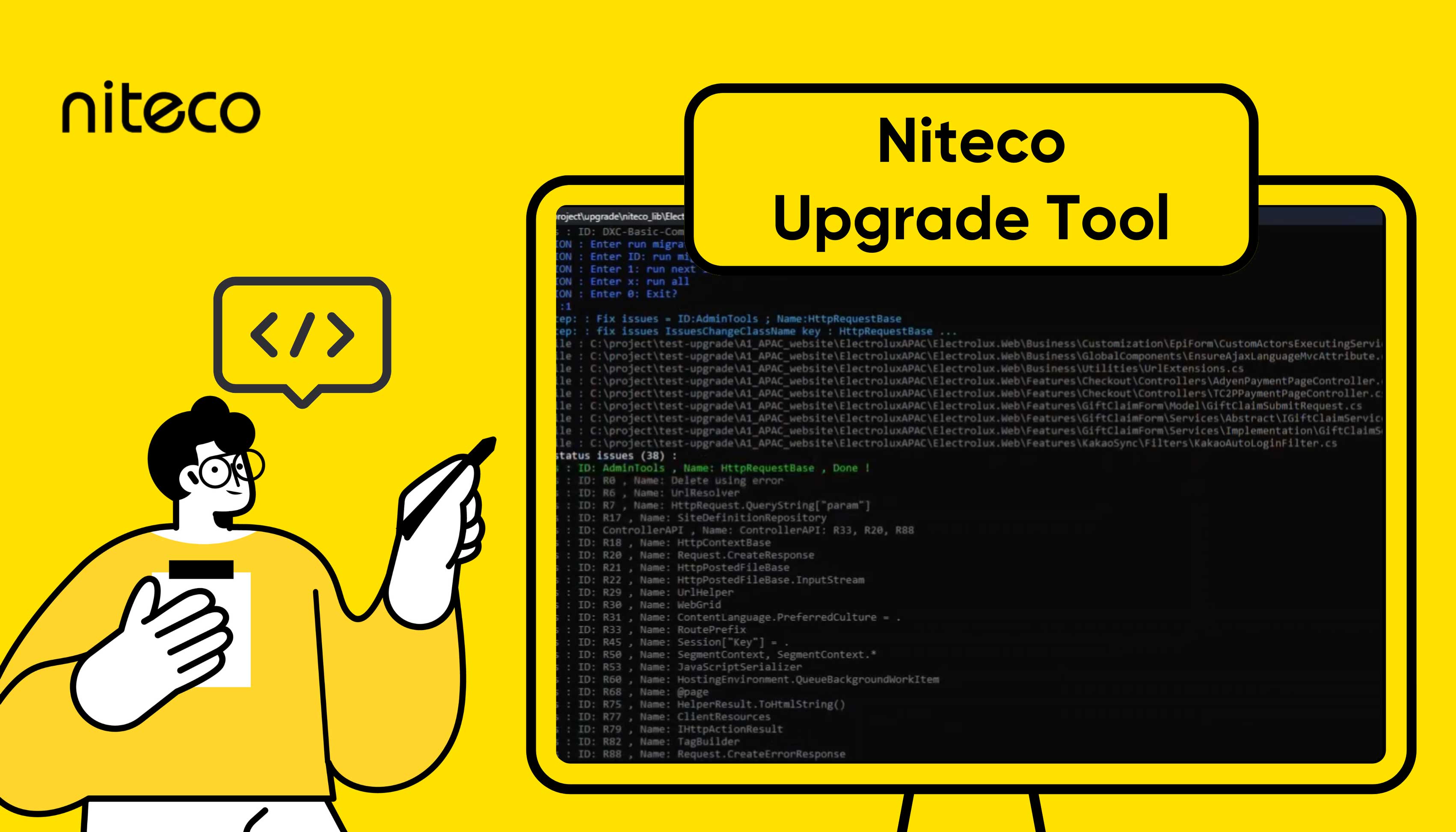Website migration is a crucial part of scaling and evolving a digital presence. Whether you’re rebranding, changing platforms, or improving infrastructure, migration presents an opportunity to align your website with your broader business strategy.
Done right, it can improve website performance, streamline the user experience, and drive endless business growth. Done poorly, it can cause traffic loss, broken pages, confused users and damaged brand reputation.
That’s why having a structured approach is essential. So how do you ensure the website migration process is smooth and the outcomes are positive?
This guide will walk you through the best practices for website migration, breaking down what you need to know before, during, and after your migration to ensure a smooth and successful transition.
Pre-migration planning: Setting the stage for success
Failing to plan is planning to fail - especially in website migration. Before any code is written or content is moved, you need to understand what’s working and what needs improvement. That’s where comprehensive site audits come in. By evaluating your current performance, SEO structure, content quality, and technical infrastructure, you set the foundation for a smooth transition.
Stakeholder alignment is equally crucial. Migration isn’t just an IT task - it impacts marketing, content, analytics, compliance, and more. Ensuring every team is aligned with the same objectives prevents last-minute blockers and confusion.
And don’t forget resources. Who’s doing what? What tools do you need? Laying this out early helps things run smoother and faster when the real work begins. If your site runs on Optimizely, our Optimizely upgrade service ensures that your migration plan includes the latest features, stability improvements, and long-term scalability.
Here’s the website migration checklist to help you kick off your project with confidence.

1. SEO audit: Catalog all indexed URLs, check backlink profile, identify top-performing pages, figure out current technical issues that should not migrate to the new site such as invalid structure data, indexable pages being blocked, and redirect loops.
2. Content inventory: Evaluate content performance. What should be kept, improved, or removed?
3. Technical audit: Assess site speed, mobile responsiveness, Core Web Vitals, and existing issues (404s, duplicate content).
4. Analytics baseline: Save reports on traffic, rankings, bounce rate, and conversions.
5. Stakeholder alignment: Engage departments like marketing, dev teams, legal, and compliance early in the process. Also ensure budget and timeline are clearly defined and agreed upon to keep the project on track.
6. Backup plan: Always have a full site backup in case rollback is needed.
Technical roadmap and information architecture
Once your audits are complete, you’ll need to define the new site structure. This means planning how pages will be organized and what the URLs will look like. Keeping URLs clean, simple, and consistent makes them easier for both users and search engines to understand. If your URLs are changing, make sure to set up proper 301 redirects from the old ones to the new ones - this helps preserve your SEO rankings and avoids broken links.
A crucial part of your technical planning is choosing the right Content Management System (CMS) - a decision that can make or break the success of your website migration. Your CMS is the foundation that powers your content, controls your workflows, and supports your site’s scalability. Choosing the right CMS can be a game changer because it directly impacts how efficiently your teams can manage content, how well your site performs, and how seamlessly it integrates with your front-end technology stack.
When evaluating CMS options, consider how well they pair with your chosen front-end framework. For example, headless CMS platforms like Optimizely’s SaaS CMS offer powerful APIs that allow full flexibility when building modern, fast front-end experiences using frameworks like Next.js, Nuxt, or React. On the other hand, monolithic CMS platforms may offer more features out-of-the-box, with built-in theming and templating engines.
As you shape the technical architecture, keep a few key best practices in mind. Avoid creating overly deep page structures. Keep your navigation simple and user-friendly. These steps lay the technical foundation for a smooth, successful migration.
Migration execution: Minimizing downtime and data loss
Now it’s time to put your plan into motion. This phase is all about moving your site while keeping everything running smoothly for your users. Here are some best practices to follow:
- Set up a staging environment that mirrors your live site. Use this space to test layouts, links, integrations, and tracking before making anything public.
- Use incremental migration to move sections of the site in phases. Start with low-impact pages like blog posts or informational content, and gradually move to high-priority areas such as product pages or the homepage.
- Try a private launch by releasing the new site internally or to a limited audience first. This lets your team test functionality and fix issues without disrupting your real users.
- Schedule your DNS switch during low-traffic hours to reduce the chance of downtime or disruptions. Monitor closely as soon as the change is live.
Strong preparation is key to a successful migration. In our successful migration from Sitecore to Optimizely for Steadfast, one of Australia’s largest insurance networks, close collaboration between our technical team and Steadfast’s internal stakeholders ensured full alignment at every stage. The result was a seamless and efficient migration, with downtime reduced from 36 minutes to just 5, and average response time improved by 30%. This case highlights how strong collaboration can lead to a seamless migration and measurable improvements in site performance and user experience. If you're planning a similar move, our website replatforming and migration services ensure a smooth transition with minimal risk and maximum business impact.
Post-migration optimization and monitoring
The job doesn’t end once the new site is live. In fact, what you do after launch is just as important as everything that came before. This is the time to make sure everything transferred correctly, search engines are indexing your new pages, and your site is performing the way it should.
Start with your SEO housekeeping. Resubmit your XML sitemap to Google Search Console so crawlers can quickly find your updated content. Keep an eye on crawl errors, and check that all your key pages are being properly indexed.
On the performance side, run a fresh round of benchmarking using tools like Niteco Performance Insight. Compare these results with your pre-migration scores to confirm that your site speed, responsiveness, and stability have either stayed strong or improved. Focus especially on Core Web Vitals like Time to First Byte (TTFB) and Largest Contentful Paint (LCP), which play a big role in both user experience and SEO performance.
This phase is all about catching what might have slipped through the cracks - and making sure your migration delivers the long-term results you planned for.
Mitigating risks: Contingency planning and rollback protocols
Even with the best planning, there’s always a chance that something could go off track. That’s why it’s important to have a solid contingency plan in place. Whether it’s a temporary performance issue or a bigger disruption, being prepared helps you respond quickly and keep things under control.
Start with strategies for disaster recovery. You might not need a full rollback, but partial rollbacks can save time and reduce impact if certain sections of your site don’t work as expected. Make sure you have backups of both content and code, and keep your version control clean and up to date so you can roll back changes if needed. Monitoring tools should be in place to alert you if something breaks, and fallback redirects should cover any unexpected gaps in your URL mapping.
Legal and compliance considerations are just as important. If you’re operating in multiple regions, double-check that your data storage complies with local privacy laws like GDPR or CCPA. Run accessibility audits to make sure the new site meets WCAG standards and is usable for everyone. Also, don’t forget to revalidate licenses for any third-party content or assets you’re using to avoid legal issues post-launch.
SEO considerations: Don’t lose what you’ve built
Preserving SEO equity is essential during a website migration. For teams migrating across regions or markets, generative engine optimization (GEO) provides scalable personalization options. Organic search traffic often represents a significant portion of a website’s visibility and revenue. Without a proper strategy, you risk losing rankings, backlinks, and the trust of both search engines and users.
To maintain your organic visibility, start by identifying your highest-performing URLs and URL in sitemap. These might be landing pages, blog posts, or product related pages that drive traffic or conversions. Try to retain these URLs whenever possible. If structural changes are unavoidable, implement 301 redirects to guide users and search engines to the new locations.
Also, migrate key SEO elements - page titles, meta descriptions, headers, structured data. Consistency is key: even small discrepancies in how this metadata is applied can cause ranking drops or indexing delays.

Don’t forget internal links. They help search engines understand your site structure and distribute page authority. Be sure that your internal linking is still functional and updated to reflect any new URL paths.
For a complete breakdown of SEO tasks to handle before migration, check out our ultimate site migration SEO checklist.
By taking a proactive approach to SEO during your migration, you can safeguard your existing visibility and maintain the momentum you’ve worked hard to build.
Enhancing user experience post-migration
Beyond technical improvements, a successful migration should also elevate the user experience. Start by evaluating your site’s navigation. Is it intuitive? Can users easily find what they’re looking for? If your structure or layout changed during migration, make sure it still aligns with your users’ expectations.
A/B testing can help you refine these changes. Try out different versions of your menu layout, product page design, or calls to action. Small design tweaks can lead to measurable improvements in engagement and conversions when backed by data.
Feedback loops also play a key role. Tools like heatmaps, user surveys, and session recordings give you real-world insight into how people interact with your site. You’ll uncover pain points that might not show up in analytics dashboards alone.
The goal is to make sure users not only stay on your site but enjoy the experience enough to return and convert.
Conclusion
Website migration is more than just a technical exercise - it’s a pivotal moment to strengthen your digital presence. Throughout this guide, we've covered the key phases of a successful migration: from auditing and architecture planning to execution, risk management, SEO continuity, and UI/UX enhancement.
A structured approach ensures that critical aspects like search visibility, page performance, and user journeys are not only preserved but optimized. Depending on your focus, your strategy may vary: SEO-driven migrations require careful URL mapping and indexing monitoring’, while UX-focused migrations should emphasize intuitive navigation and user feedback.
There’s no one-size-fits-all solution. The most successful migrations are the ones tailored to your specific business goals and user needs. With Niteco, your migration will be highly customized and aligned with your business goals while minimizing risks, maximizing performance and paving the way for scalable growth.
Thinking about a website migration? Contact Niteco to learn how we can help you plan, execute, and optimize your next digital move.



